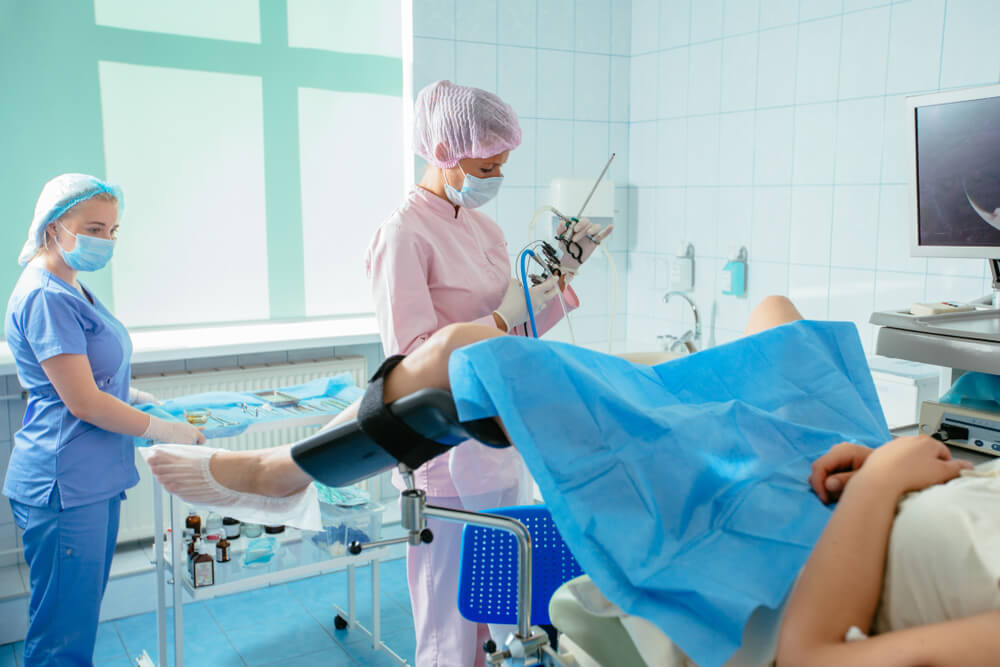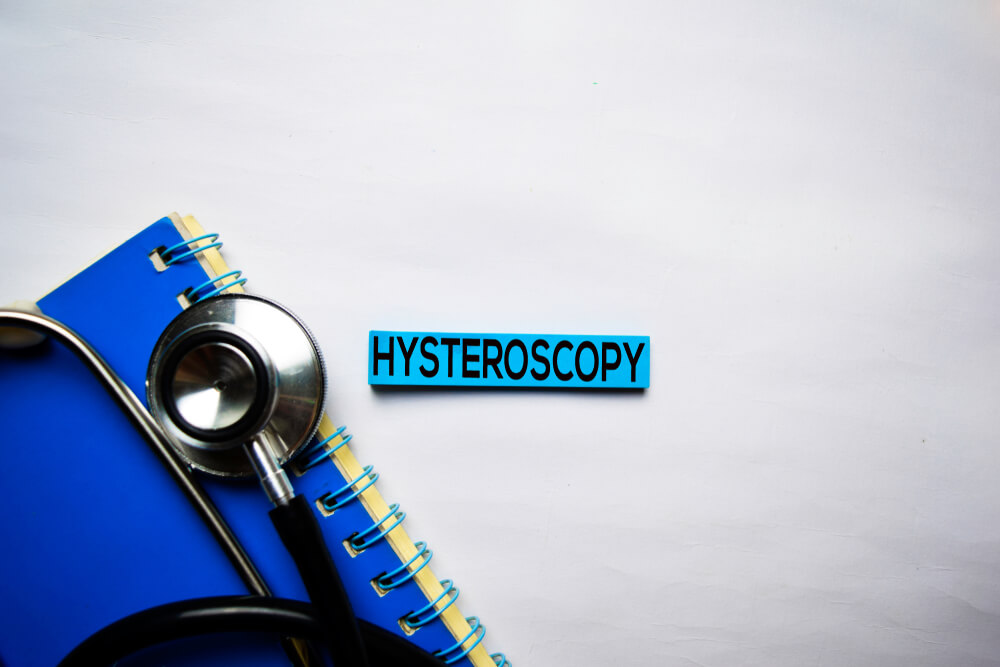Suppose you are facing issues such as pain in your pelvis, strange vaginal bleeding, painful and burdensome periods, miscarriages, and alike. In that case, a hysteroscopy procedure is one of the potential options to examine these conditions further and get an accurate diagnosis.
In case you want to find a high-quality gynecologist in Doral, FL, it is important to keep in mind that the service offered needs to come from an accomplished team, with significant experience regarding the number of patients who had successful hysteroscopy surgery and who can offer a guarantee of success.
Hysteroscopy is?
Hysteroscopy is a type of surgery with a minimal invasiveness approach used to diagnose and treat issues with the uterus. The surgery is performed with a telescope-like, thin instrument, referred to as a hysteroscope, that is inserted in the uterus through the cervix. Using this type of instrument excludes potential scarring of the tissue externally.
Hysteroscopy is usually divided into two types:
- Diagnostic hysteroscopy is used to diagnose any abnormalities with the womb and surrounding organs, any conditions such as fibroids and polyps, to further examine issues with fertility, miscarriages, pelvic pains, etc.
- Operative hysteroscopy is used for corrective reasons i.e. to remove adhesions, intrauterine devices, and growths of different kinds, to take tissue for biopsy procedures, as well as to perform sterilization
This kind of procedure helps show the medical professionals the inner part of the uterus so they can check the health of your reproductive organs such as the cervix and its canal, Fallopian tubes, vagina, and the uterus itself.

Why Should I Have a Hysteroscopy?
There are different reasons to schedule a hysteroscopy:
- To examine symptoms or issues such as heavy vaginal bleeding, uterus or cervix malformations, heavy menstruation, pelvic pains, etc.
- To try and cure conditions such as adhesions, uterine growths, issues with intrauterine devices, and alike.
Hysteroscopy is a procedure that is sometimes used as supplementary for other surgeries such as laparoscopy or curettage and it is also used as an additional confirmation tool for different diagnoses.
Benefits of a Hysteroscopy
There are many benefits to hysteroscopy surgery and this is why it is a very common option patients choose for diagnosis and treatment.
Some of the benefits are:
- Minimally invasive surgery
- Brief recovery period
- Brief or no hospital admission
- Very little medication used
- Avoidance of more serious procedures like hysterectomy
- Insignificant degree of scar tissue
How to Prepare for a Hysteroscopy
The preparation process for the hysteroscopy procedure is not overly complicated. This is some useful advice:
-women are usually requested to take a pregnancy test seven days before the procedure because the surgery cannot be performed on pregnant women
-it is advised to also take contraception until the start of the procedure
-the optimal time to schedule the procedure is in the first week after the menstrual cycle has finished
-if the procedure involves the removal of fibroids, medication for reduction of their size could be recommended
-the procedure is not recommended for patients who have an active pelvic infection or a cervical or uterine cancer
What Does the Procedure Look Like?
As it is seen as almost non-invasive, hysteroscopy surgery is used quite frequently. Medical staff use tools that create minimal harm to the reproductive organs and the body as a whole. The procedure does not last long, and usually, the treatment does not require hospital admission for longer than the duration of the procedure.
Sometimes before the surgery doctors recommend sedatives to make the patient feel more calm and comfortable.
When it comes to anesthetics, they are usually not mandatory for the procedure, but depending on individual cases the medical professionals make recommendations on the potential usage of anesthetics throughout the surgery. The anesthetics can include either local, regional, or general anesthesia. If the cervix is not dilated enough, additional medication for the opening of the cervix might be given.
Below are given the detailed steps so you know what to expect:
- The medical staff gives sedatives and anesthesia to the patient (if that is the chosen option)
- The patient lays down on the medical bed (similarly to many other gynecological check-ups)
- The cervix is dilated with a speculum
- The doctor inserts the hysteroscope into the uterus which is followed by the insertion of a liquid or gas which aids in expanding the way to the uterus making it more clear
- The instrument gets moved through the uterus to make all the necessary organs visible on the screen for the medical professional
There are certain cases where surgery is necessary, so the hysteroscope is the tool for the insertion of small-scale surgical tools. When it comes to the sterilization process, implants will be put in the fallopian tubes, and in case of a biopsy, a small instrument will be passed through the hysteroscope to extract a tissue sample.
In regards to the duration of the hysteroscopy procedure, it might take from five minutes to a full hour. This depends on the patient’s needs – do they only need a diagnosis or also surgery.
If you are wondering about the pain levels, it is distinct for each individual. Some patients sense mild discomfort, and others feel a great deal of pain. For this reason, sedatives are recommended before the procedure.
Hysteroscopy Recovery Time
There might be some short-term side effects such as cramps and bleeding immediately after surgery. Additionally, shoulder aches and the sense that you might faint or feel sick are possible when gas is being used. If additional symptoms (heavy pain in the abdomen, serious vaginal bleeding, high temperature, etc.) occur, contact your selected doctor right away.
After the hysteroscopy is finished and if general anesthesia was utilized, the doctors could keep the patient for some time in the hospital for observations. The majority of the patients are allowed to leave the hospital right after the procedure, with a general recommendation to take the day off for recovery.
Some additional advice given to patients after the surgery includes resting more in the first couple of days, avoiding alcoholic beverages, and driving a car. Also, it is advised to avoid having sexual relations, taking baths – only showers, and it is recommended to use anti-inflammatory medication to control the pain if it occurs.

Is Hysteroscopy Safe?
It is safe to say that every type of surgery brings certain risks of complications and hysteroscopy is no exception. Although there is a less than one percent chance of complications taking place, there are still some risks one might want to take into consideration such as:
- Risks concerning anesthesia which are the primary reason for persons to stay for additional monitoring following the procedure
- Infections that are most commonly cured with antibiotics
- Vaginal bleeding which ameliorates after a few days but it can continue to occur for a week more
- Severe vaginal bleeding which is remedied with medication or an additional procedure
- Uterine perforation which might call for additional care and surgery
- Injured cervix which can be repaired with an additional procedure
- Injured uterus or bladder which can also be repaired with an additional procedure
- Scarred internal tissue of the uterus
It is of great importance to consult your chosen medical caregiver before the surgery to prepare yourself and steer clear of complications.
We Are Here for You!
This blog post contains the most important information you might need when it comes to having a hysteroscopy, but there is still plenty you can ask and find out about if you contact us! We are here to support you in making an informed decision about your reproductive health so give us a call or schedule an appointment!


